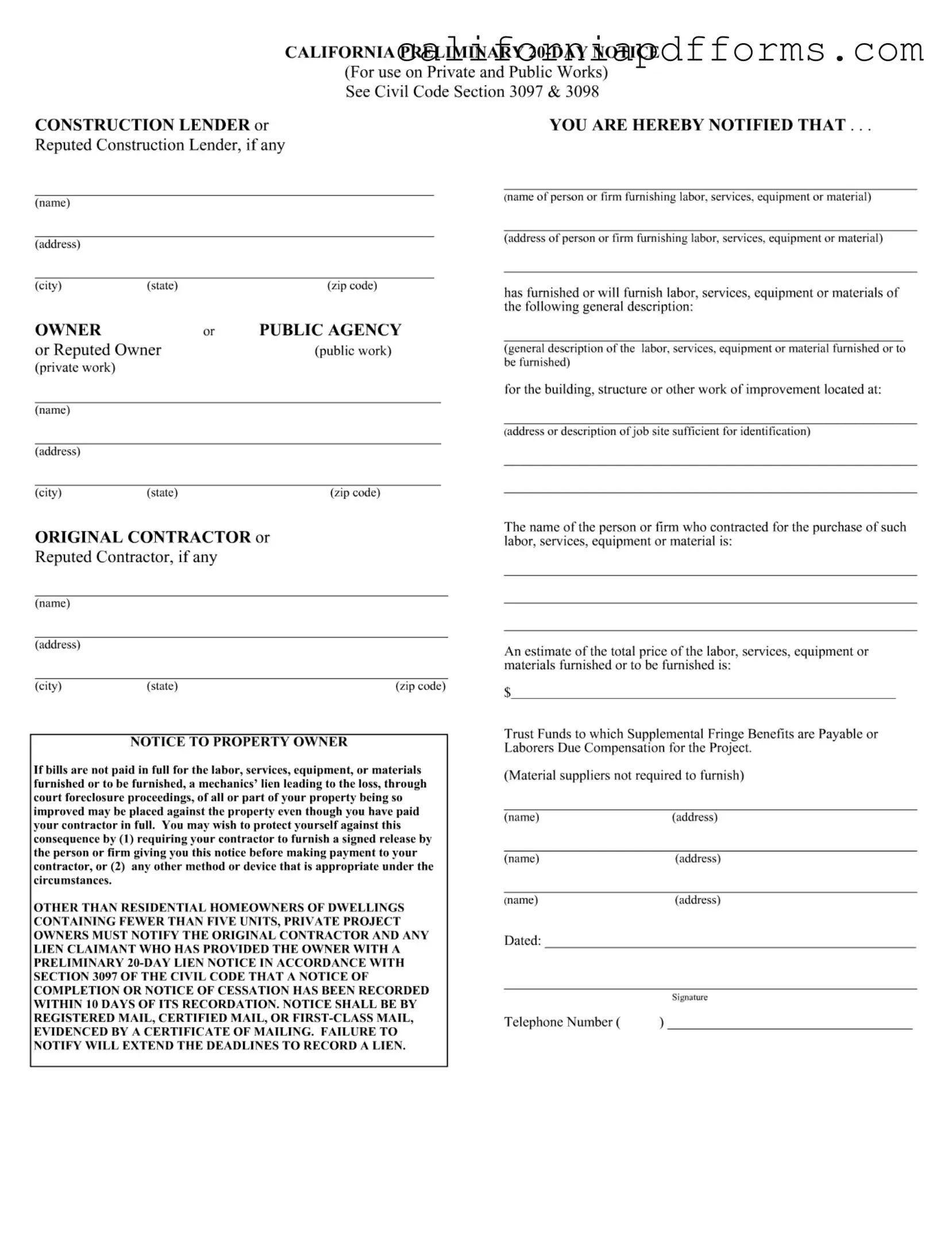What is the purpose of the California Preliminary 20-Day Notice?
The California Preliminary 20-Day Notice serves as a formal notification to property owners, contractors, and construction lenders. It informs them that a subcontractor or supplier has provided or will provide labor, services, equipment, or materials for a construction project. This notice is crucial because it protects the rights of those who supply work or materials, ensuring they can claim payment if necessary.
Who needs to use the Preliminary 20-Day Notice?
This notice is typically used by subcontractors, suppliers, or anyone providing labor or materials for construction projects, both private and public. If you are involved in a construction project and have not been paid, sending this notice is a good step to safeguard your financial interests.
How does the Preliminary 20-Day Notice affect property owners?
For property owners, receiving a Preliminary 20-Day Notice is a warning. It indicates that even if they have paid their contractor in full, they could still face a mechanics' lien if the contractor does not pay the subcontractors or suppliers. This lien could lead to a legal claim against the property, potentially resulting in foreclosure. Owners should take this notice seriously and consider requiring proof of payment from their contractors.
What should be included in the Preliminary 20-Day Notice?
The notice should include the following information:
-
The name and address of the construction lender or reputed construction lender.
-
The name and address of the property owner or public agency.
-
A description of the labor, services, equipment, or materials provided.
-
The address of the job site.
-
The name and address of the original contractor.
-
The estimated total price of the provided labor or materials.
What happens if a property owner does not respond to the Preliminary 20-Day Notice?
If a property owner fails to respond to the notice or does not take action, they may face significant risks. The deadlines for recording a lien could be extended, which can complicate matters if payment disputes arise later. It is advisable for owners to keep communication lines open with all parties involved in the project.
How should the Preliminary 20-Day Notice be delivered?
The notice can be delivered in several ways, including:
-
Personal delivery to the involved parties.
-
First-class registered or certified mail.
Whichever method is chosen, it is essential to keep proof of service to ensure that all parties have received the notice.
What are the consequences of not sending the Preliminary 20-Day Notice?
If the Preliminary 20-Day Notice is not sent, subcontractors or suppliers may lose their right to file a mechanics' lien. This means they could miss out on recovering payment for their work or materials, which can have serious financial implications. Sending the notice is a critical step in protecting one’s rights in construction projects.
Is there a deadline for sending the Preliminary 20-Day Notice?
Yes, the notice must be sent within 20 days of the first day labor, services, equipment, or materials are provided. Sending it within this timeframe is crucial to maintaining the right to file a mechanics' lien later if necessary. Delaying beyond this period can jeopardize your ability to claim payment.
